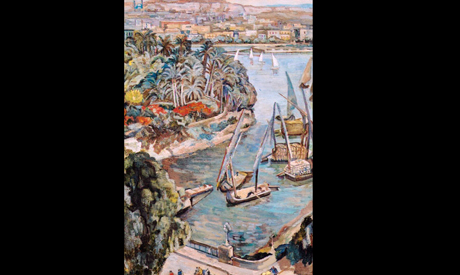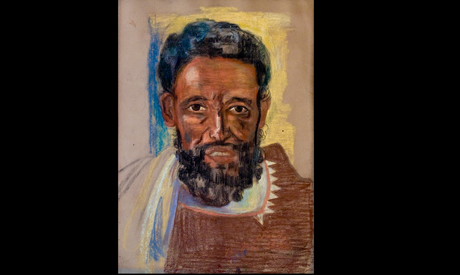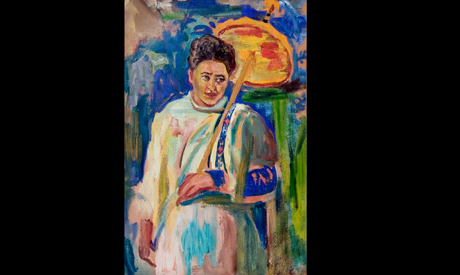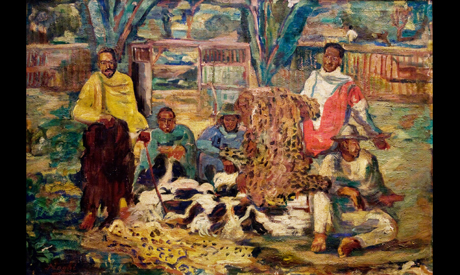Date: Saturday, 25 July 2020

Along with sculptor Mahmoud Mokhtar and painters Mahmoud Said and Ragheb Ayad as well as several others, Mohamed Nagy (1888-1956) belongs to the first generation of modern Egyptian artists – the pioneers. His work drew on both ancient Egyptian heritage and the nationalist movement, but he was unique among his peers in his eagerness to travel to Africa.
Born in Alexandria, he graduated from the University of Lyon with a degree in law, but went on to study at Florence’s Academy of Fine Arts, the first Egyptian to do so, where he fell under the influence of Claude Monet. He soon travelled to Ethiopia where he produced work emphasising the historical and cultural links between the two countries.

In this sense Nagy managed to be a truly international artist. He melded his European training as an impressionist with a strong sense of identity and a belief in the natural and historical bonds linking people all along the Nile from the south to the north of the continent. This, he expressed in poetry and writing as well as painting.
He also drew on the Latin American mural tradition and his paintings had clear political messages, with Egypt Renaissance, a horizontal composition that won first prize winner at the Salon de Paris – for example – showing the goddess Isis, symbol of fecundity and progress, riding among her loyal people. “When the health of a society runs out,” he said in the course of a speech he gave in Prague in 1928, showing prescient wisdom, “it is up to the people close to the nourishing origins of the civilization to feed it through its inexhaustible resources.”

A formative figure as well as an eager collector and talent scout, Nagy cofounded Cairo’s School of Fine Art and founded the Cairo and Alexandria ateliers. He directed the Cairo Modern Art Museum in 1939-47 and the Egyptian Arts Academy in Rome in 1947-1950.

In 1924 Nagy started working as a diplomat, living in Paris, Athens and Rio de Janeiro, but he resigned in 1932 to spend time in Addis Ababa as an Egyptian government delegate. He made portraits of Emperor Haile Selassie, whom he met on Palm Sunday three months after arriving in Ethiopia, as well as studies of everyday life in Ethiopia and numerous landscapes.
Ethiopia had fascinated him since childhood, when he visited his grandfather who was an army officer stationed on the Ethiopian-Sudanese border. On his journey from Port Said through the Suez Canal by French boat to Djibouti, and onto Addis Ababa by train, he saw dazzling flora and fauna that he describes to his sister, the renowned painter Effat Nagy, in a letter. His fascination with all he saw was to find expression in his paintings. By the end of his stay the emperor had granted him the country’s Gold Medal and asked him to paint the empress.

In 1968, many years after Nagy’s death, the then Minister of Culture Tharwat Okasha opened a museum dedicated to him at the site of his studio in Giza; it was closed for renovations and reopened in 1991. The space houses over 120 paintings as well as 400 sketches and drawings in addition to the artist’s easel, brushes and his library. But only 60 paintings have been on display since the museum reopened. According to museum director Mahinaz Maher, Nagy’s paintings are being restored to be exhibited.

“I wanted to portray the Ethiopian landscape as it was, full of life, activity and rituals,” Nagy wrote to his sister. “I discovered a new world of daring colours laid boldly in large spaces on canvas. I used abstraction as I learned it from ancient Egyptian and Islamic art. I reached an almost epic style that reflects the common artistic heritage and culture of the land of the Nile.”